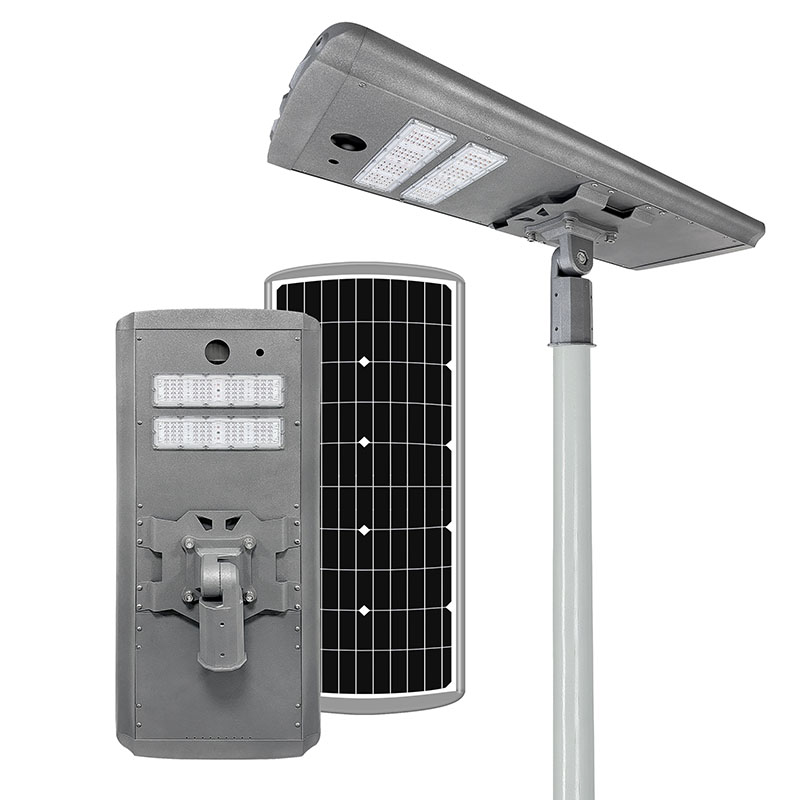In recent years, sustainability has become a major priority for communities worldwide. One of the most significant advancements in sustainable living is the widespread adoption of residential area solar lighting. By utilizing renewable solar energy, residential solar lighting systems help reduce electricity consumption, lower utility costs, and minimize environmental impact. In this article, we will explore how solar-powered streetlights and other residential area solar light solutions are enhancing sustainability in communities, creating a greener and more eco-friendly environment for residents.
Key Benefits of Residential Area Solar Lighting for Sustainable Communities
Reduced Carbon Footprint
One of the most notable advantages of residential area solar lighting is its ability to reduce a community’s carbon footprint. Traditional street lighting systems rely on electricity generated from fossil fuels, which contribute to greenhouse gas emissions and environmental degradation. In contrast, solar lighting systems use the sun’s energy to power streetlights, which significantly cuts down on carbon emissions. By switching to solar-powered streetlights, communities can take an important step towards achieving their sustainability goals.
Lower Energy Consumption and Cost Savings
Solar lighting systems are self-sustaining, drawing energy from the sun during the day and storing it in batteries for use at night. This eliminates the need for traditional electricity, leading to substantial cost savings over time. Municipalities, property managers, and developers can reduce their energy bills by switching to residential area solar light systems. The long-term benefits include lower operational costs for lighting infrastructure, which can be reinvested into other sustainability initiatives.
Minimal Maintenance and Longevity
Residential area solar lighting systems are designed to be durable and low-maintenance, which further supports sustainability efforts. Unlike conventional lighting systems that require frequent maintenance and replacement of bulbs, solar lights have longer lifespans and fewer components that need attention. As they are powered by renewable energy, solar lights also do not rely on the grid, reducing the strain on existing energy infrastructure.

How Solar Lighting Systems Improve Community Aesthetics
Aesthetic Appeal and Urban Enhancement
In addition to the environmental and financial benefits, residential area solar light can also enhance the aesthetic appeal of neighborhoods and public spaces. Solar lights are often sleek and modern, adding a contemporary touch to parks, streets, and public areas. The integration of solar-powered streetlights can help beautify a community, making it more attractive to potential residents, visitors, and investors.
Increased Property Values
A well-lit and eco-friendly neighborhood is more attractive to homebuyers, and the installation of residential area solar lighting can have a positive impact on property values. Communities that prioritize sustainability and energy efficiency are often perceived as more desirable places to live, which can lead to higher demand for homes and increased property prices. This makes solar lighting not only an environmentally responsible choice but also a smart investment for long-term value.
Environmental Impact and the Future of Solar Lighting in Communities
Contribution to Renewable Energy Goals
Many cities and towns are setting ambitious renewable energy goals to reduce their dependence on fossil fuels and transition to cleaner, more sustainable sources of energy. Residential area solar lighting plays a pivotal role in achieving these goals by replacing conventional streetlights with solar-powered alternatives. By integrating more solar-powered systems into their infrastructure, communities can significantly reduce their reliance on non-renewable energy sources and move closer to a carbon-neutral future.
Supporting a Circular Economy
Solar-powered lighting systems are an excellent example of a circular economy in action. Rather than relying on finite resources, solar lighting uses renewable energy from the sun, reducing waste and promoting a sustainable cycle. The manufacturing of solar lights also contributes to a green economy by providing jobs in clean technology and supporting businesses focused on sustainable products.

Conclusion:
Residential area solar lighting is undoubtedly a key player in the shift towards more sustainable, eco-friendly communities. By offering benefits such as reduced carbon emissions, lower energy costs, and enhanced community aesthetics, solar-powered streetlights are an ideal solution for neighborhoods looking to embrace sustainability. As technology advances and solar lighting systems become even more efficient, the potential for these systems to revolutionize urban and residential lighting is immense. Communities that invest in solar lighting today are helping to build a cleaner, greener future for generations to come.
FAQs
Q1: How much energy can residential area solar lighting save?
Residential area solar lighting can save up to 50-70% on electricity bills compared to traditional grid-powered lighting systems, depending on the location and usage.
Q2: Are solar lights effective in all climates?
Yes, modern solar-powered streetlights are designed to function effectively in various climates, even in regions with limited sunlight, thanks to advanced battery storage systems.
Q3: What are the maintenance requirements for solar streetlights?
Residential area solar lighting systems require minimal maintenance. Most models only need occasional cleaning and a battery replacement every 5-7 years, which significantly reduces operational costs.



